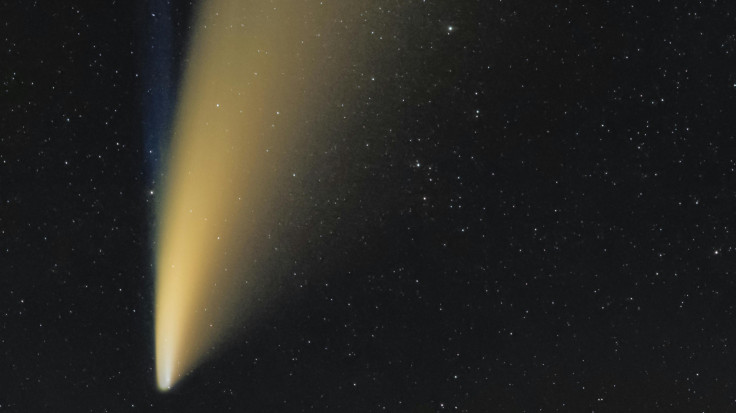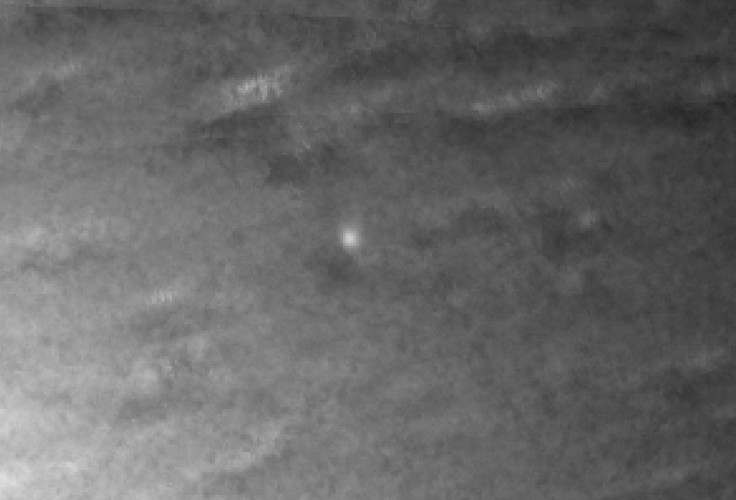3I/ATLAS Showed Baffling Speed Boost—The Mystery Just Got Worse
Interstellar object 3I/ATLAS is 'maneuvering' past the sun. Scientists are baffled. Is it a natural comet or the first sign of alien tech?

Imagine a rock, larger than a mountain, tumbling through our solar system from an unknown star. Now, imagine that rock suddenly accelerating, as if a colossal, invisible engine just fired, pushing it faster and faster away from our Sun.
This is the baffling mystery of 3I/ATLAS, an interstellar visitor that is forcing scientists to question what is possible—and what might be out there. It's an anomaly so profound that it has, according to some reports, captured the attention of the US Congress.
The controversy ignited when, in a shocking revelation, Harvard astrophysicist Dr. Avi Loeb stated that the object 'clearly maneuvered.' Loeb claimed the sudden boost in speed was 'equal to the thrust from a jet expelling five billion tons of material.'
Let that sink in: a visitor from another star system that appears to be actively changing its course.

The 'Baffling' Acceleration of 3I/ATLAS
The mystery surrounding 3I/ATLAS has 'got worse' due to its behaviour, which defies conventional explanations. The core of the problem is its 'non-gravitational acceleration'.
After making its closest approach to the Sun (perihelion) on October 30, 2025, 3I/ATLAS sped up. This is the opposite of what is expected. The Sun's gravity alone cannot account for this boost. This anomaly is unlike that of previous interstellar visitors, such as 'Oumuamua, which showed only minor acceleration.
3I/ATLAS, however, is now travelling at an extraordinary speed of over 210,000 kilometres per hour (130,000 mph), and the speed boost lacks a clear cause.

Why Is 3I/ATLAS Missing Its Comet Tail?
This is where the puzzle deepens. Normally, a comet accelerates near the Sun because the heat vaporises its volatile materials, like water ice. This process, known as outgassing, acts like a small rocket engine and creates the visible tail we associate with comets.
3I/ATLAS has no such tail.
Observations, particularly from the Hubble Space Telescope, did not show the expected massive gas or dust emissions that could explain its powerful acceleration. Adding to the confusion, 3I/ATLAS has already shown massive tail jets stretching millions of kilometres, far beyond anything seen from natural comets.
Now, it appears to be moving with purpose. It even displays an unusual 'anti-tail', which points towards the Sun.
Furthermore, its physical profile is strange. The object is estimated to be very large (over 5 km in diameter and exceeding 33 billion tons), making it vastly more massive than 'Oumuamua and Borisov. It also has an unusually high carbon dioxide to water ratio, a composition that is significantly different from typical solar system comets.

3I/ATLAS: A Natural Marvel or Alien Craft?
This unusual behaviour has led to intense scientific debate, splitting observers into two main camps.
Most scientists believe 3I/ATLAS is an unusual, albeit natural, phenomenon. It is likely a comet from a distant star system, where it drifted for billions of years, gaining momentum from gravitational 'slingshots' with various stars. Its unusual composition could simply be due to its formation in a different environment or its extremely old age.
However, Dr. Loeb has proposed the artificial origin hypothesis. He argues that the combination of anomalies—specifically the lack of conventional outgassing coupled with propulsion-like acceleration—points to forces beyond known natural processes.
In this view, 3I/ATLAS could be an artificial spacecraft or perhaps a piece of discarded alien technology.
🚨 Did 3I/ATLAS Just Move on Its Own? 🚨
— Astronomy Vibes (@AstronomyVibes) November 10, 2025
In a shocking revelation, Harvard astrophysicist Dr. Avi Loeb told Newsmax that the interstellar object 3I/ATLAS — now under congressional investigation — appears to have changed its trajectory after passing the Sun.
“It clearly… pic.twitter.com/bytROnw20H
The Ongoing Watch for 3I/ATLAS
Scientists are now racing against time. Teams are using the James Webb Space Telescope and the ESA's JUICE (JUpiter ICy moons Explorer) mission to conduct detailed observations, searching for any definitive trace of a definitive gas cloud or other evidence that could confirm its cometary nature.
Whether natural or artificial, 3I/ATLAS will not be with us for long. It is currently moving away from the Sun and Earth on a hyperbolic trajectory, meaning it will permanently leave our solar system. It is expected to make its closest approach to Earth (at a safe distance of about 270 million km) on December 19, 2025.
After that, it will vanish back into the interstellar void. The question is, will we solve its mystery before it's gone for good?
The window to study 3I/ATLAS is closing fast. As its closest approach on December 19, 2025, draws near, the scientific community is racing for answers.
Will it be remembered as a strange natural comet or the first confirmed sign of non-human technology passing through our solar system? The data gathered in the coming weeks could change our understanding of the universe forever.
© Copyright IBTimes 2025. All rights reserved.





















